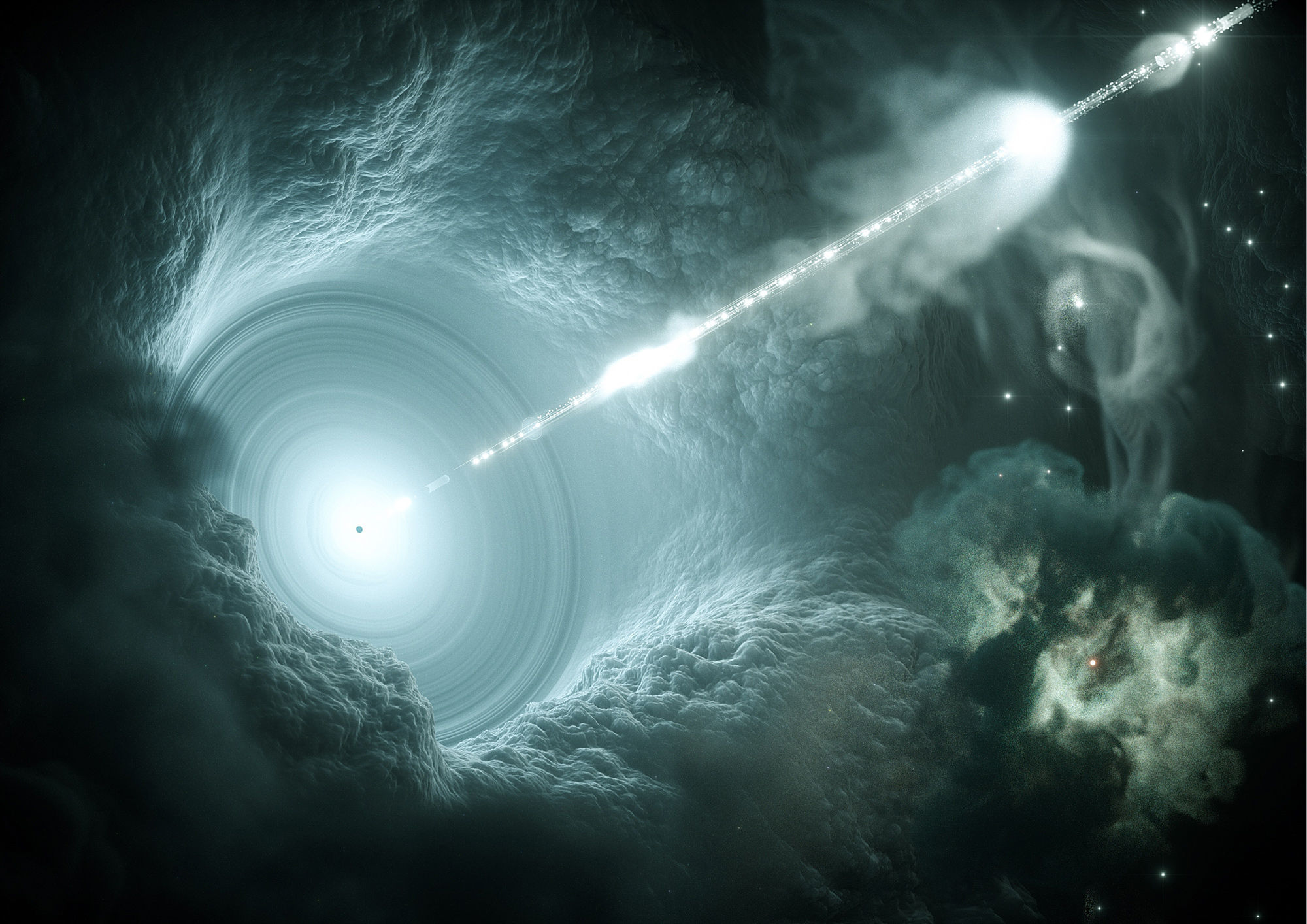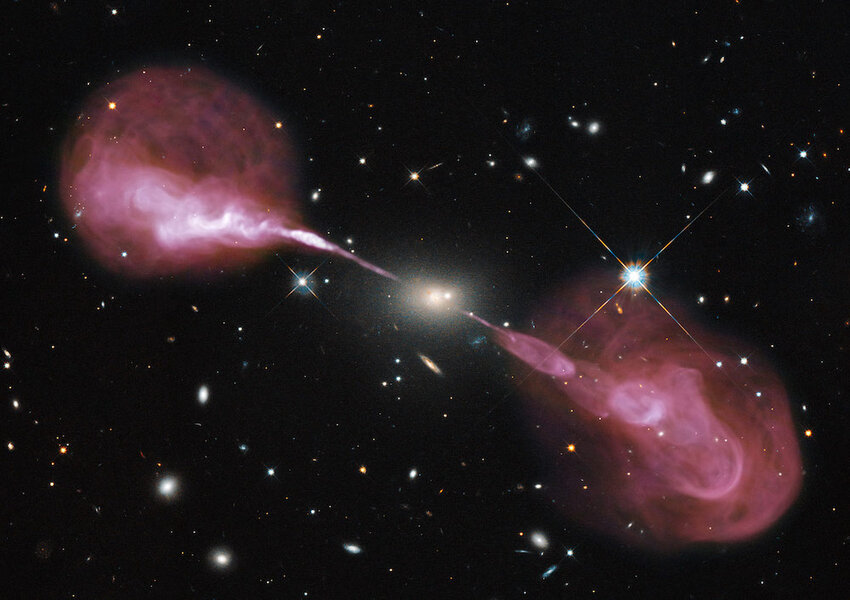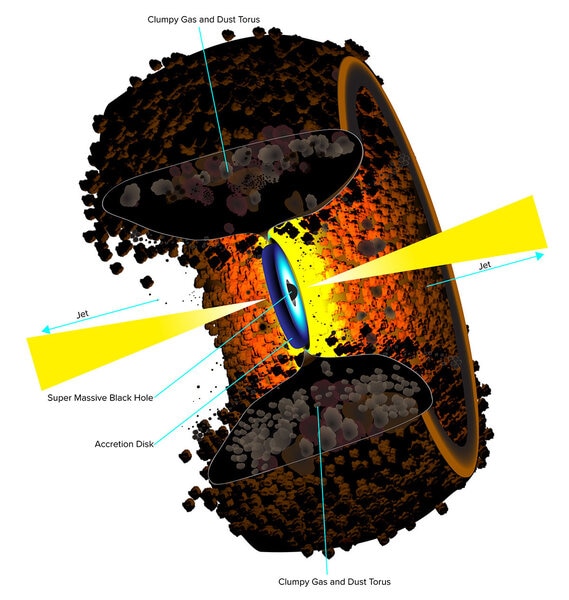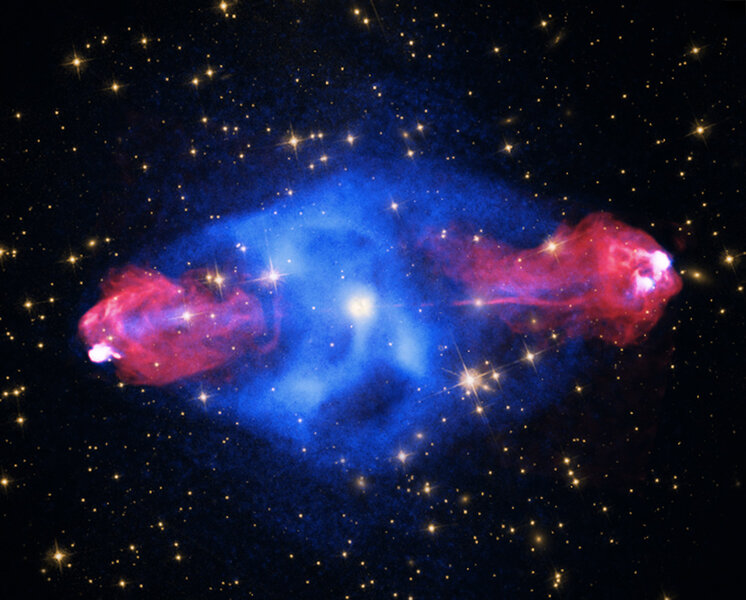Create a free profile to get unlimited access to exclusive videos, sweepstakes, and more!
Looking for bright black holes — 750,000 galaxies at a time
New method finds big black holes in distant galaxies

A weird problem astronomers have is finding monster black holes.
It's a common misconception that black holes are nature's ultimate garbage compactors. Toss something in, and it's gone. Bloop! But that's not always the case.
In space, stuff tends to come in at an angle, giving it some angular momentum. This means that instead of falling straight in, it orbits around the black hole. Dump in enough stuff and it forms a flat accretion disk, which heats up due to internal friction — stuff closer in to the black hole moves much faster, rubbing against slower stuff. Imagine rubbing your hands together to generate heat; now do that at very nearly the speed of light and imagine how much heat that would make.
Hot stuff glows, and accretion disks can glow brilliantly indeed. We know essentially all big galaxies have huge black holes in their centers, and the accretion disks around them can glow so brightly they outshine all the stars in the galaxy combined.
So you think they'd be easy to find, but that's not really the case.
We call these enourmous black holes gobbling down copious amounts of matter active galactic nuclei, or AGN (and in general the galaxies are called active galaxies). Sometimes they're easy to find; they blast out X-rays as material close in to the black hole is energetic enough to create such high-energy photons. Others are very bright in radio waves, and spectra — breaking the light up into thousands of individual colors — can reveal the high velocities of material circling the Point Of No Return.
The problem here, among others, is that these tend to be specialized observations. If you want to know if some random galaxy is active you have to point a special telescope at it, sometimes for a long time.
What's needed is a way to ID these active galaxies with observations already in hand, like ones taken by surveys of the sky. Those usually use filters to select out specific colors from ultraviolet, optical, and infrared light. This has kinda been before; different kinds of galaxies have different colors, so you can look up the brightness of a galaxy in different filters and ID what kind it is, like spiral or elliptical. It's also possible to get a decent estimate of a galaxy's distance this way, too.
Doing this for AGNs is tougher. Galaxies undergoing bursts of star formation are bright and look like AGN, for example. AGNs change over time as well; there were more in the past than there are now, so you see more at great distances (since it takes time for the light to reach us, so we see them as they were long ago).
What's an astronomer to do?
Well, a team of astronomers took matters into their own hands. They modified a pre-existing piece of software called ProSpect that's used to identify galaxies by color, and added a component that models AGN light. The idea they based this on is that many AGN have a huge donut-shaped torus of dust surrounding the accretion disk. This can be very thick, blocking the actual light from the nucleus. However, the high-energy radiation hitting it is reprocessed, causing the dust to glow in infrared in specific ways. This depends on a lot of factors, including how luminous the AGN is, the angle we see it (if we see it face-on the hole in the middle of the torus lets the light through, but at an angle it blocks that light), and how thick the torus is. But all of these can be modeled, so they created software to do so and incorporated it into ProSpect.
They then fed into it the colors of galaxies observed by two different surveys. One was the amusingly named DEVILS (Deep Extragalactic VIsible Legacy Survey), taken using the Anglo-Australian Telescope, a 3.9-meter 'scope in Siding Spring Observatory. It's not a huge survey, covering just six square degrees of sky (about 30 times the area of the full Moon on the sky), but it went deep, and observed nearly 50,000 galaxies. The other was called GAMA (Galaxy and Mass Assembly Survey), also taken using the Anglo-Australian Telescope but of a different part of the sky, covering a much larger 230 square degrees and seeing 294,000 galaxies.
They found a total of about 77,000 galaxies that had AGN features in their colors combined with the colors of a normal host galaxy, which is pretty cool. To test their method they also pre-selected a pile of known active galaxies in those surveys IDed using conventional methods, and recovered 91% of them. Not bad. Better to miss some than to misidentify ones that aren't (which is much harder to debug).
The beauty of this method is that it uses observations already taken that are fairly standard, so you don't need to spend hundreds or thousands of hours of telescope time using special methodology to ID the AGNs. So you can just hit the archive, dig up a pile of galaxies, and screen them. Nifty. This has been difficult to do in the past, but the new algorithm does a decent job. Even better, it's good at finding fainter AGNs that have a lot of their light either blocked by the dust torus or are very far away, which other methods have a difficult time picking up.
This isn't the be-all end-all of finding AGNs, but it's possible it will become a very handy tool astronomers can keep in their kit, especially as much bigger, deeper surveys come online in the coming years. There are likely many millions of AGNs out there in the Universe, and even if we find thousands of them, that's just the start. Anything that can power through that vast a number of observations is something that will be extremely useful.





























